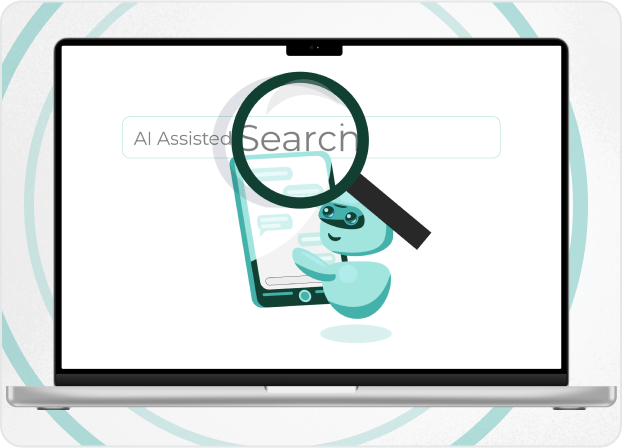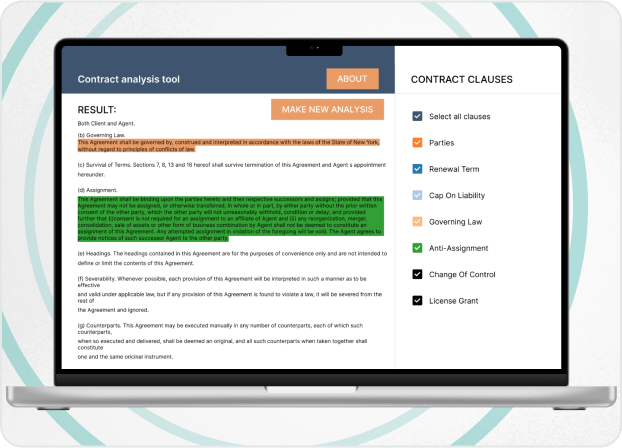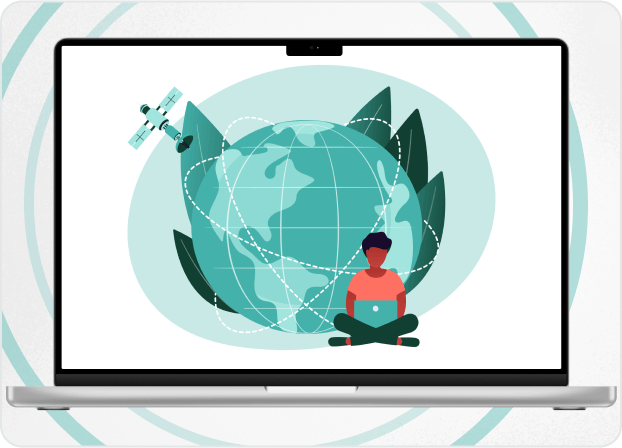Author’s Thoughts
"AI agents are becoming more and more popular and more and more companies are having a positive response to their implementation. These are universal AI solutions that have planning, self-learning and error correction capabilities that imitate human thought processes. In this blogpost Silk Data presents a comprehensive overview of AI avatars essence and perspective."
Nikolai Karelin
AI is the sphere which has demonstrated sufficient advancements for the past few years. One of them is the development of intelligent personalized AI assistants combining both abilities to handle conversation and visual human-like appearance known as AI avatars.
Statistics by Market Research Future says that the following ten years will demonstrate rapid growth of digital avatars market with more than 30% increase every year.
It doesn’t mean, however, that this technology is a tool that can solve any problem and is easy to adapt to.
For instance, Eric Seyoung Jang, CEO of Deep Brain AI declared:
We at Silk Data have our own opinion on the topic of AI personal avatars perspectives. The following blog article considers the concept of AI avatars, provides a short overview on the technologies used in their development and demonstrates their capabilities of application in different industries.
What is AI Avatar and What Technologies are Used to Create Them?
AI avatar or AI-based personalized assistant is a program or application providing digital representation of a real person or a fictional character with the help of AI technologies. They are typically designed to simulate human speech, movements and behavior and operate in the form of advanced human-like interaction with users. At the same time, the usage of AI technologies allows these avatars to dynamically change their behavior and adapt to changes in the environment.
There are several ways of representation:
- Textual, for example in the form of AI-based chatbots.
- Vocal as voice assistants like Siri or Alexa.
- 3D avatars when we see a full digital representation of the person or character.
As the first two types of AI avatars are rather familiar and represent digital assistants with limited mimicking functionality, 3D avatars powered by AI appear to be the most explicit type, and this blogpost primarily focuses on them.
The main idea of advanced AI avatars using 3D animation is that the program provides answers to user queries imitating human speech and behavior, such as mimic, tone of voice and many others. Several advanced technologies help to create an AI avatar and make it look, sound and act as natural as possible.
ML and NLP
Usage of machine learning techniques allows AI avatars to provide correct responses to user queries. A special model is trained on a huge amount of data regarding human behavior and knowledge needed to provide the most accurate answers.
At the same time, usage of natural language processing techniques, such as syntax, sentiment and context analysis allow AI-based avatars to properly understand user queries. Advanced avatars using NLP can comprehend grammatical and stylistic structure of textual (and not only) inputs, define the tone of voice and recognize certain speech patterns.
Altogether, ML and NLP make digital avatars able to manage meaningful and complicated dialogues with a user, imitating real human-like communication.
Facial Recognition / Image and Video Processing
One of the main approaches that allows to create a real AI presenter is facial recognition. Based on the technology of computer vision, avatar can track and identify human face parts along with certain expressions on it.
At the same time, advanced image and video processing can be used in developing digital avatars that imitate real people or fictional characters, being a foundation for further development.
3D Animation Building
The technology of 3D animation building is one of the most crucial for digital assistant development, as it ensures that the model will be truly human-like.
Advanced 3D animation systems use the combination of rigging (creating digital characters’ skeleton) and motion capture, when the real movements are applied to the avatar model. Such an approach is commonly used by large movies and GameDev studios, who produce highly realistic videos.
Speech and Voice Synthesis
A one more crucial aspect of creating personalized digital avatar. Combining text-to-speech and voice synthesis techniques, this aspect of development allows the avatar to produce human-like voice messages and maintain voice conversations.
Advanced 3D animation systems use the combination of rigging (creating digital characters’ skeleton) and motion capture, when the real movements are applied to the avatar model. Such an approach is commonly used by large movies and GameDev studios, who produce highly realistic videos.
Text-to-speech method is targeted at linguistic processing (creating phonetic representation of language), sounds and intonation generation with further voice cloning.
At the same time, voice synthesis allows the result of these processes to adjust to certain emotional, contextual and even cultural patterns and manners.
It is worth noticing that most explicit AI avatars are developed with the combination of all the mentioned technologies and approaches.
Facial recognition and content processing perform as the foundation for further development ensuring that the outlook of the future avatar will be as accurate and natural as possible. 3D animation techniques allow the avatar accurately mimic movements and features while speech and voice synthesis approaches ensure the highest possible level of speech’s genuineness.
Empowered by ML and NLP these avatars can learn from external data and surroundings adapting their movements, reactions, tone of voice and messages according to the context, sentiment and emotional patterns of the conversation.
AI Avatar, AI Agent and VR: Comparing Digital Entities
The concept of AI avatars makes us recall other explicit directions of AI and digital technologies.
Industries of intelligent AI agents and virtual reality also demonstrate rapid market growth, and both are targeted at meaningful and high-quality interaction with users. So, it is necessary to have a short overview and compare these AI-based solutions.
AI Avatars vs AI Agents
Though AI avatars and AI agents can be used for similar tasks and in identical fields, there are many aspects that differentiate these solutions.
As advanced AI avatars are represented by complete 3D models that can imitate human (and not only human) speech and expressions, AI agents are typically represented by LLM-based chatbots with advanced capabilities of perceiving and analyzing user queries.
There are several key points that characterize AI agents:
- Primarily task-oriented.
- Operate through texts or automated actions.
- Mostly represented by chatbots powered by certain agentic features.
- Focused on autonomous performance with minimal user intervention.
- Minimal focus on user emotions and experience.
- Can be customized for certain tasks, but never as digital 'personas'.
We’ve already explored the topic of AI agents, considering the advantages and considerations of the industry. Read our blogpost to get more details.
AI Avatars vs VR
The technologies used in AI avatars development may present them as one of the forms of virtual reality. However, there are certain features by which we can differentiate these tools.
VR is a technology that focuses on the development of digital environments similar to the real or imagined world.
Virtual reality can be defined by several features:
- Operates through physical interaction, primarily based on usage of special sensors and controllers.
- Represented by full-fledged computer-generated environment.
- Stimulates user satisfaction and improves user experience through full immersion in the digital environment.
The following table provides a comprehensive comparison of all three advanced digital technologies.
| Criteria | AI Avatars | AI Agents | VR |
|---|---|---|---|
| Way of Interaction | Primarily visual and conversational, often with voice, facial and body expressions for enhanced realism. | Primarily interact through text and automated actions, sometimes through voice. | User interacts through physical movements and gestures, often with the help of special devices. |
| Range of Tasks | Virtual customer support, entertaining activities, education, gaming, social interaction. | Customer service, personal assistance, automated data analysis. | Gaming, educational tasks, training, simulations. |
| User Experience | Focused on creating an atmosphere of real presence of digital person. | Focused on autonomous performance with minimal human intervention and user interaction. | Provide advanced user experience through full immersion in the digital environment. |
| Learning Capabilities | AI-powered avatars can adapt according to changes in user behavior or perceived data. | High level of self-learning from both external and internal data with further self-correction. | Standard VR typically doesn't "learn" but can be empowered with AI to adapt content of the digital environment. |
| Customization Capabilities | Vast range of options to customize avatar’s outlook, speech and behavior. | Can be customized for specific tasks, but the way of interaction and user experience primarily remain unchanged. | Actively formulates plans, sets objectives and adapts strategies dynamically |
The comparison demonstrates that it is impossible to define the best digital solution, as all of them are unique in their nature and purpose. Through that, the choice of application of avatars, advanced AI agents or VR depends on certain tasks and particular spheres of usage.
If you face difficulties with defining which solution suits your needs best, Silk Data can help. Years of experience, vast knowledge and an efficient working approach allow us to find solutions that that will fully address your business needs.
Functions Performed by AI Avatars
Technologies used in the development of AI presenters or avatar apps allow them to perform a vast range of functions. Let’s have a short overview of the most popular and demanded of them.
AI Avatars for Entertainment
The avatar AI capability of imitating a real person or popular fictional character makes it possible to use them as assistants or digital companions on different entertaining digital platforms. It reaches far beyond videogames and movies.
For instance, a music or streaming app can use AI-powered avatars that look like real music stars to guide the user or interact with them in different ways. The same avatars, for example, imitating famous authors or characters, can also be used in audiobooks to expand and improve the process of narration from the point of user experience and satisfaction through full immersion into the book setting.
AI Avatars as Digital Assistants
In 2024 Gartner surveyed more than 6,000 customers from different industries and countries, finding that more than 60% of them don’t wish to interact with AI or bots while solving their problems.
As usage of traditional chatbots has a negative impact on customer experience, AI avatars can make the situation better. Well customized personalized AI assistants provide the feeling of presence and human-like interaction, so the customers feel that they talk with a real person.
AI Avatars in Social Platforms and Digital Ecosystems
The advanced capabilities of AI avatars to mimic human movements, speech, behavior and quickly adapt to the changing surroundings, allow the users to get personal avatars on social platforms and multi-user systems.
For example, using Facebook Horizon users can create their digital representatives and interact through them with other people. Applied to other platforms and ecosystems, the capabilities of digital avatars can enhance the user self-expression in the vast virtual world.
Industries AI Avatars Can be Applied to
Let’s have a look at the spheres that can benefit the most from using interactive AI avatars.
Marketing and Sales
The way AI avatars can be applied to marketing and social media are numerous. Beyond already mentioned digital representatives used on some social platforms, these advanced digital assistants can be a part of marketing campaigns or interact with customers.
For instance, an AI avatar may perform as a business ambassador, a full-fledged digital human able to introduce the company product or expertise. They also can answer customer queries or get feedback from them in the way of a human-like conversation.
One of the most noteworthy examples was presented by BMW. The company started a whole marketing campaign using an AI-powered video promo of its iX2 electric vehicle. 3D avatar of a digital influencer Lil Miquela presents the new car in a dynamic story describing her journey with iX2.
Education
Education seems to be one of the most promising spheres for advanced digital avatars to show their capabilities. Interactive and simulation-based learning, virtual tutoring and guidance – all these tasks can be performed with a high level of user satisfaction, as it would seem like interaction with a real educator.
Moreover, usage of advanced ML and NLP techniques can guarantee that the system will consider cultural, social and language nuances.
For instance, The European School of Management and Business (EUDE) uses such a solution in their tutoring practice. Based on Watson AI developed by IBM, tool provides immediate answers to administrative and academic questions and supports students with logistical questions related to delivery dates and exams.
Healthcare
Properly trained AI avatars can be useful for healthcare services as well. Doctors and healthcare organizations can use these advanced digital assistants for administrative affairs such as providing information on patients or scheduling appointments.
Such a solution is already represented by Sensely, a digital platform used for medical consultations. The user can book a conversation with an NLP-powered avatar that can provide all the necessary information on health issues.
In further perspective, 3D AI-based avatars can perform as healthcare advisers or digital psychologists.
If you face difficulties with defining which solution suits your needs best, Silk Data can help. Years of experience, vast knowledge and an efficient working approach allow us to find solutions that that will fully address your business needs.
Retail and E-commerce
One of the main tasks that virtual avatars can be applied to in the retail industry is customer support. AI avatars can be deployed as customer service representatives in both physical stores and online platforms. They can assist customers with product inquiries, return policies, or help guide them through the buying process. A good example of it is Neon developed by Samsung. It is a system that provides 3D avatars that can smile, nod, laugh, and engage with customers in real-time conversations.
Such avatars can also provide intelligent shopping assistance, giving information and а recommendations about certain goods and brands.
Conclusion
AI avatars remain a field that requires lots of fine-tuning. However, avatar AI technology offers transformative advantages that extend far beyond simple automation, redefining the future of user engagement.
With their 24/7 availability feature, businesses can provide round-the-clock support, ensuring customers have constant access to assistance. The same is for the ability to personalize interactions that allows AI avatars to cater to individual needs, creating a more tailored and satisfying experience for users. Furthermore, personalization feature stimulates user satisfaction, as they find a conversation with personalized avatars far more pleasant compared to standard chatbot interaction.
Whether in customer service, healthcare, or entertainment, these digital assistants significantly enhance user experience by delivering more natural, intuitive, and human-like interactions. As AI avatars continue to evolve, their potential is extremely high, offering businesses the tools to engage with their customers in a more meaningful and impactful way.
If you wish to get an innovative solution which will improve your business indexes, Silk Data offers comprehensive expertise in AI solutions development. We will identify your needs and use our vast knowledge to help your company with the task of process automation, optimization and much more.
Our Solutions
We work in various directions, providing a vast range of IT and AI services. Moreover, working on any task, we’re able to provide you with products of different complexity and elaboration, including proof of concept, minimum viable product, or full product development.


























